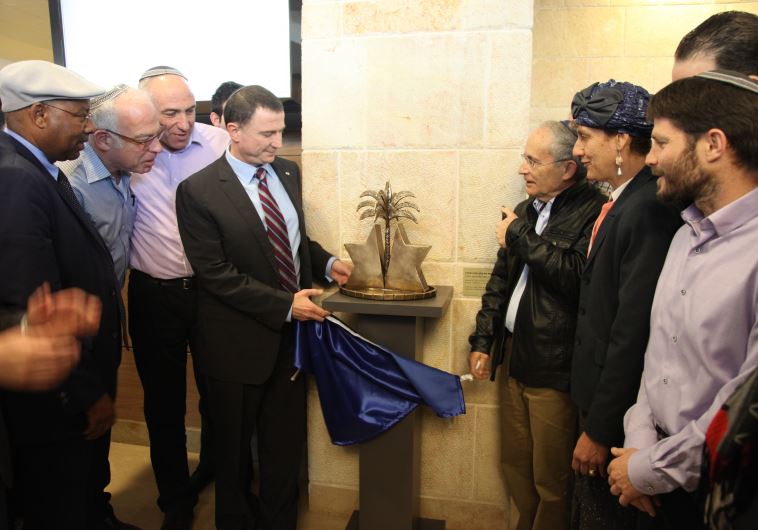Knesset memorializes Gush Katif withdrawal
The monument is a miniature of a sculpture depicting a palm tree growing out of a Star of David.
 Memorial dedication of Israeli communities uprooted from Gaza(photo credit: COURTESY KNESSET SPEAKER'S OFFICE)Updated:
Memorial dedication of Israeli communities uprooted from Gaza(photo credit: COURTESY KNESSET SPEAKER'S OFFICE)Updated: